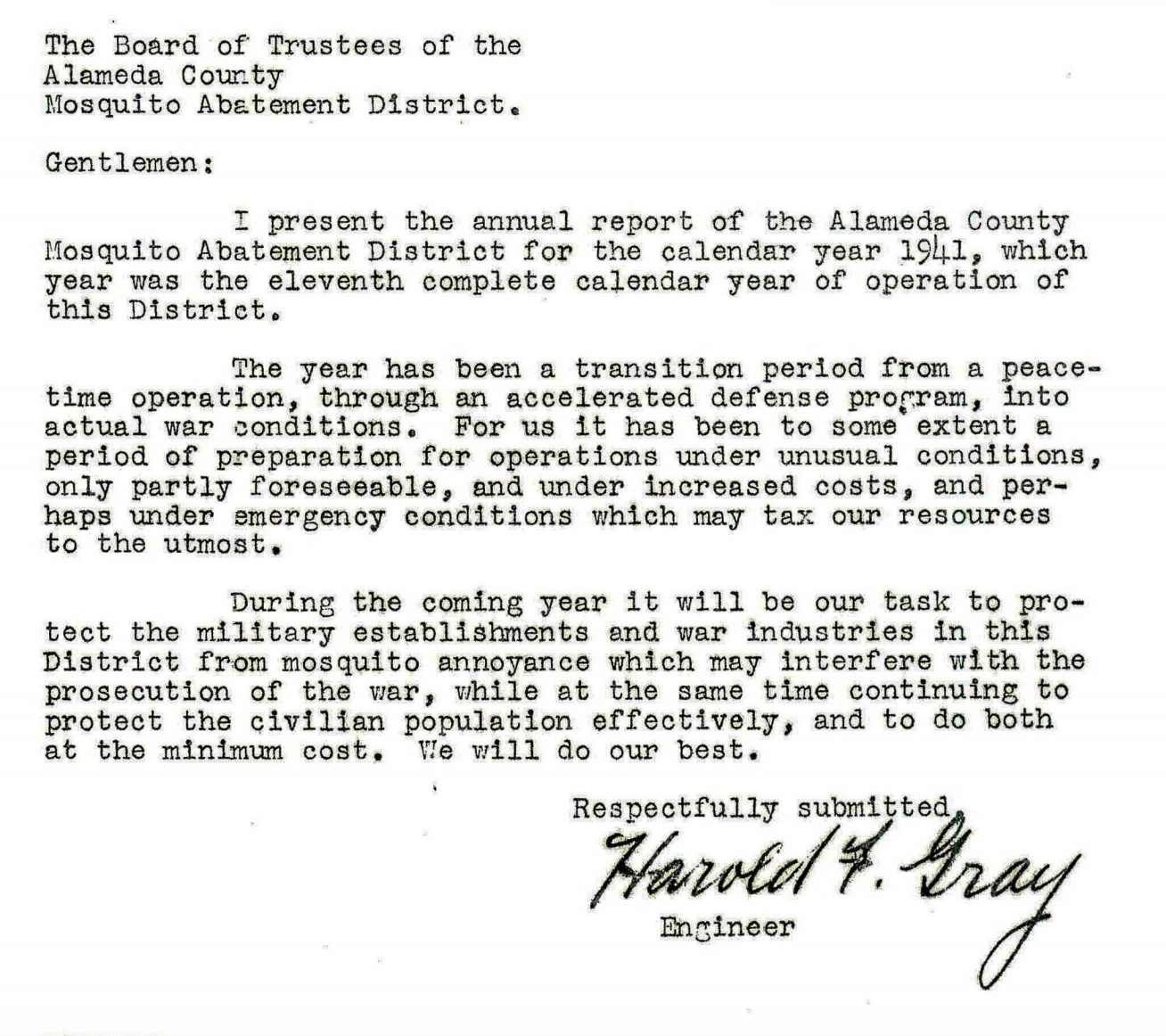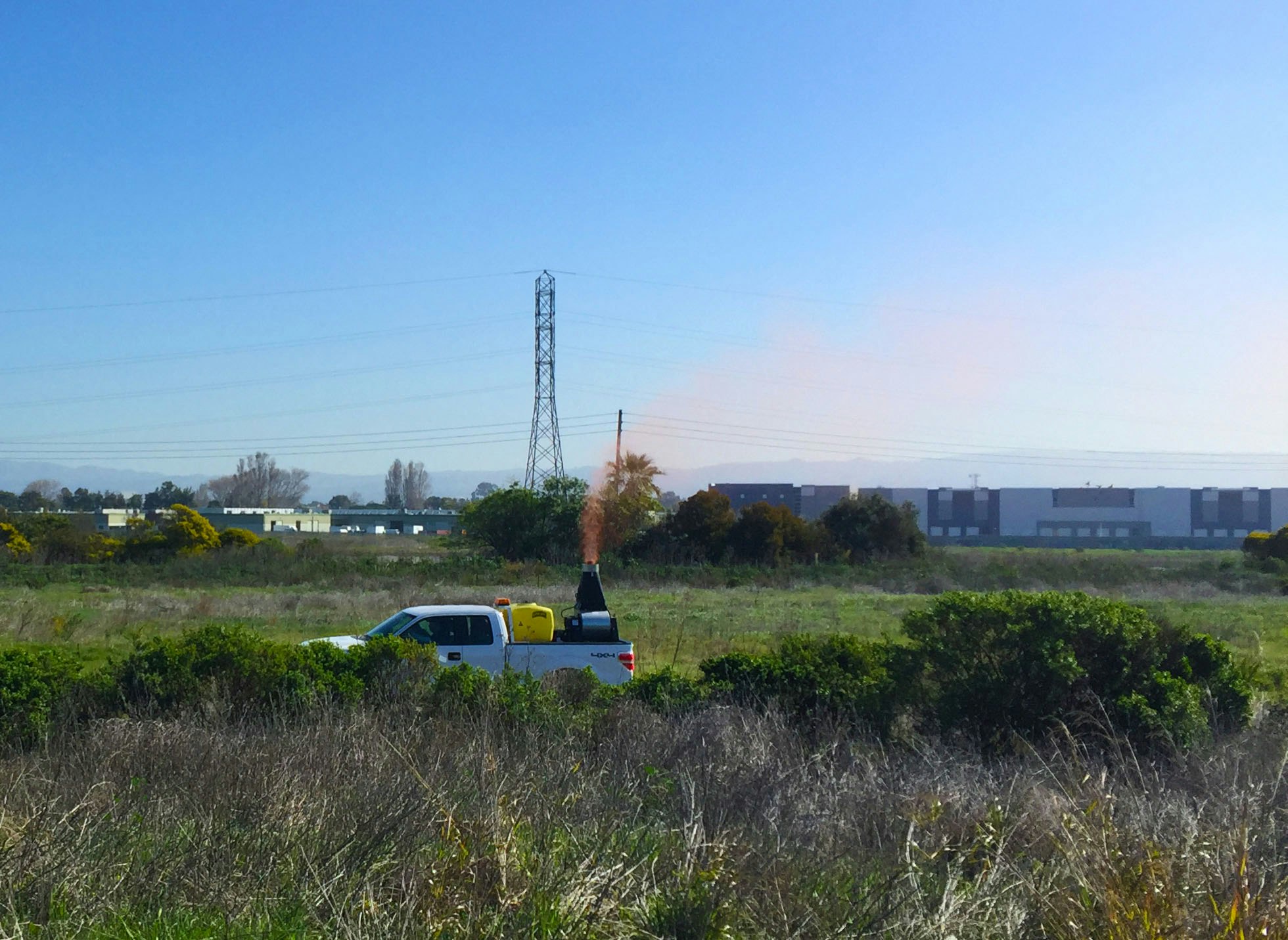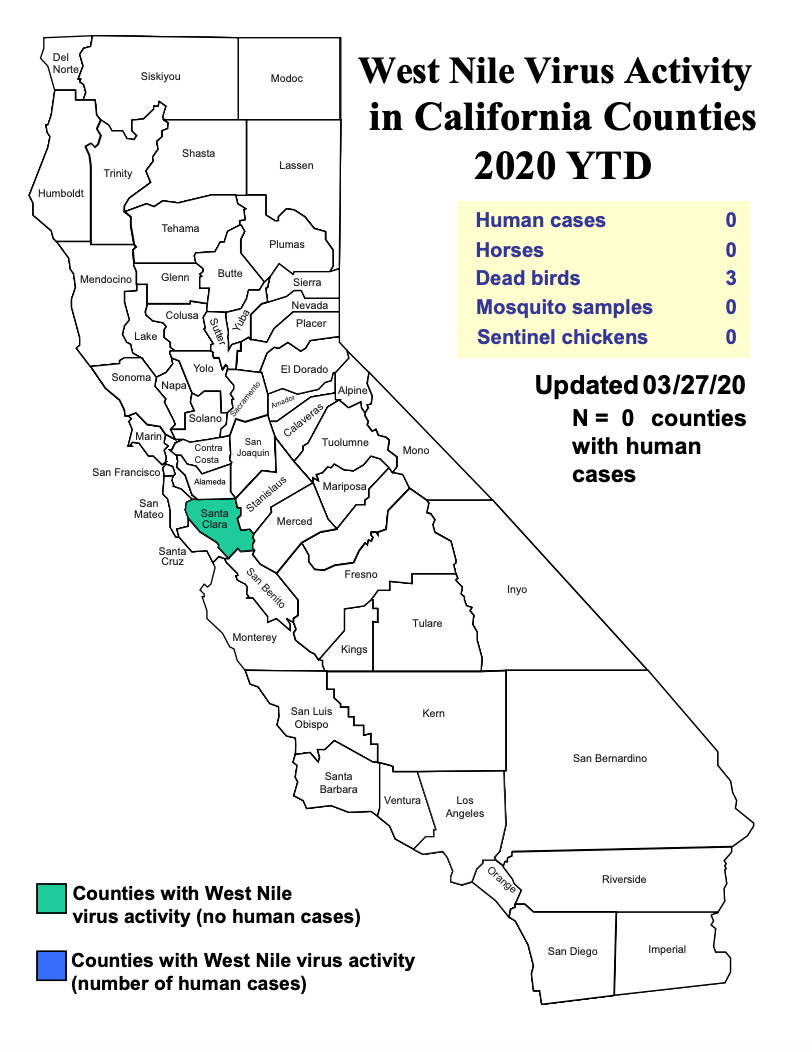Spring Newsletter 2020
Quarterly Newsletter and Updates Spring 2020
90th Anniversary

This year marks the 90th anniversary of our District services in Alameda County. Over the 90 years there have been multiple global, national, and local events that have had an impact on the District. During World War II our District was determined to continue providing the necessary services to ensure that mosquitoes weren't an issue not only for Alameda County residents but also for military personnel. When West Nile virus (WNV) was introduced into Alameda County in August 2004, the District had been preparing for its arrival since 2002 when it was evident that the virus was moving towards the West coast. Now we have a sophisticated surveillance program that is continually testing birds and mosquitoes for WNV. Our District is staying positive during these uncertain times as we continue to provide essential services to Alameda County residents.
A message from our Lab Director, Eric Haas-Stapleton, PhD
The newly emerged novel coronavirus (SARS-CoV-2) that causes COVID-19 has spread worldwide and is of great concern to public health workers like us at Alameda County Mosquito Abatement District. Our mission is to control mosquitoes that spread life-threatening diseases such as West Nile virus (WNV) and fortunately, the coronavirus is not spread by mosquitoes.

Like all viruses, WNV and the coronavirus are very small: more than 250 million of them would fit on the head of a pin. When viewed with a high-powered electron microscope, coronaviruses look like a ball surrounded with a crown (corona means “crown” in Latin). Looking at WNV through the same microscope, and you’d see the virus is also shaped like a ball, but without a crown. WNV is grouped in with flaviviruses, which get their name from the founding member of the group, yellow fever virus (flavi means “yellow” in Latin). While the genetic material that makes up the coronavirus and WNV are the same (both genomes are RNA, which differs slightly from the DNA that makes up our genomes), the genes that help determine how those viruses infect are very different. Surprisingly, the nucleotide sequence of the genome in the 2019 coronavirus is 96% identical to SARS coronavirus, the virus that caused the SARS pandemic in 2003.
The new 2019 coronavirus appears to have a strong preference to infect people, causing moderate to severe flu-like symptoms. However, it’s likely the many people that get infected with the coronavirus won’t have any obvious symptoms; they are asymptomatic carriers that can unknowingly spread the virus to other people. WNV on the other hand preferentially infects birds and is spread predominately by three species of mosquito that occur in California. A WNV-infected mosquito that bites a person can transmit the virus, but the bite recipient may not have symptoms and an infected person cannot spread WNV to another person. The spread of WNV to humans is reduced by controlling mosquitoes. Because the coronavirus is easily spread from person to person, the only way currently available to limit COVID-19 is to drastically reduce person-to-person contact.
Like most of the people residing in the San Francisco Bay Area, we too are under shelter-in-place and social distancing orders to slow the spread of the coronavirus. But because we are public health workers, we are continuing our work to control mosquitoes so that another public health emergency fueled by rampant spread of WNV does not emerge. We’ve been in the field controlling mosquitoes for the past 90 years and will continue the work this year, and for all the years to come. So we’ll be seeing you out there, separated by at least 6 feet, controlling mosquitoes, because we know that’s what we can do to improve everyone’s enjoyment of the outdoors and to protect public health during these troubling times.
Board of Trustees Meetings
Per the orders by Governor Gavin Newsom to stay at home, our Board of Trustees will be attending our monthly Board Meetings via telecommunications until further notice.
WALS Demonstration

On March 12, 2020 ACMAD conducted a test operation with our new A-1 mist sprayer equipped with a rotary atomizer. This piece of equipment has been used successfully around the state and country to treat invasive Aedes mosquito larvae utilizing the WALS (wide area larvicide spray) method. The machine and attachment create a mist of fine droplets that can travel several hundred feet in the right conditions. The goal is to reach cryptic, hard to access sites such as small containers, plant saucers, and other standing water in areas like backyards that may harbor mosquito larvae. The material that is delivered is very specific to mosquito larvae.
The operation was a joint effort of operations staff, the mechanical specialist, and the district lab. A representative from Valent Biosciences with extensive experience with the use and testing of this equipment was also part of the test/calibration process. This operation had several facets: testing the equipment in a field setting, calibrating the droplet sizes emitted and distances traveled, and testing the effectiveness of the larvicide that was applied. In summary: the test went very well, the wind conditions were ideal, the A-1 functioned well, the droplets were in the right size spectrum and distributed well across the test site, and the larvicide killed a majority of the mosquito larvae exposed to the treated cups.
Also in attendance to observe this trial were operations staff members from several mosquito and vector control districts from neighboring counties and an inspector from the Alameda County Department of Agriculture. The positive results from this test are the first step towards utilizing the A-1 for marsh larvicide treatments and in ACMAD’s continued efforts to be prepared for the arrival of invasive Aedes mosquitoes.
Day in the Life of Our Field Staff by Ben Rusmisel

On a typical day, I arrive to work about a half an hour early. This gives me time to settle in at my desk, clock in, and review any service requests. Today there are none for my zone, in fact there have been very little this year in general. After dressing in my uniform, I prepare my truck with the necessary materials to complete my day of work since I will be on my own and away from the office for the rest of the day. I do not follow a set schedule for checking mosquito breeding sources, however, I like to make my way through the entirety of my marsh sites on a weekly basis. This allows me time to coordinate treatments that require special equipment or partnership with other agencies and inspect and treat the smaller sources by hand on the spot.
Today my first stop of the day is a ditch that runs for several hundred yards and terminates into a large open pond. Water is sparse despite the rain over the last 2 days and the ditch does not have any mosquito breeding. From there, I continue along the Hayward shoreline to a series of ponds that make up Marsicano salt marsh, water level is extremely low and not a problem at this time. Adjacent to this area is the Hayward sewer plant and a collection of large ponds that are out of use. Water level has been maintained at a low level, away from the vegetation that surrounds the perimeter and provides harborage for mosquito breeding. From there I inspect a site called “tank farm” where the fuel silos for the Oakland airport are stored. This is a large open marsh that resembles a U - shaped depression in the ground. Rainwater run off collects here in considerable quantities and there is a relatively high amount of mosquito breeding. I will have to return with the argo (an amphibious, 8 wheeled vehicle with spray tank and apparatus for treatment) as the amount of liquid larvicide needed here usually ranges between 250-300 gallons. The mosquito species found here is Culex tarsalis, a vector of West Nile virus. After inspecting tank farm, I head to an area along the Oakland shoreline, where 66th Ave. and Oakport meet. There is ponding from rainwater in this area as well as fields with water along the walking path. This area is also breeding Culex tarsalis mosquitoes but is treatable by hand with a bacterial larvicide in a granular form. I end my time in the field for the day checking a site along the railroad tracks in San Leandro. A combination of rainwater and tidal water runs the length of a good portion of tracks at the end of Lewelling Blvd., but at this moment things look good.
After I return to the District office at the end of the day, I park my truck in its designated spot and finish my paperwork and insect identifications. Tomorrow will be a totally different day, inspecting and treating a different list of sources, and handling any new calls that come in.
West Nile Virus

Our laboratory continues to test suitable dead birds for West Nile virus (WNV) during the shelter-in-place ordinance. If you come across a dead bird please report it online at www.westnile.ca.gov. We have also reintroduced a chicken flock into our WNV surveillance program this year. The mosquitoes most effective at spreading WNV are more common in the summer months and reduced their activity once the rainy season set in. However, mosquitoes can breed all year long in the Bay Area so proper precautions to avoid mosquito breeding should be taken. Now is a great time to check for standing water in your yard and drain or cover anything that will hold water longer than 4 days. Visit our backyard checklist to see common places where mosquitoes breed.
2018-2019 Biennial Report
The Alameda County Mosquito Abatement District is pleased to announce that our 2018-2019 biennial report is now available. It can also be accessed on the publications page of our District website. The report highlights our mosquito surveillance, control, and outreach efforts, as well as updates to District infrastructure during the past two years.
